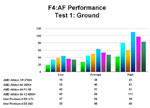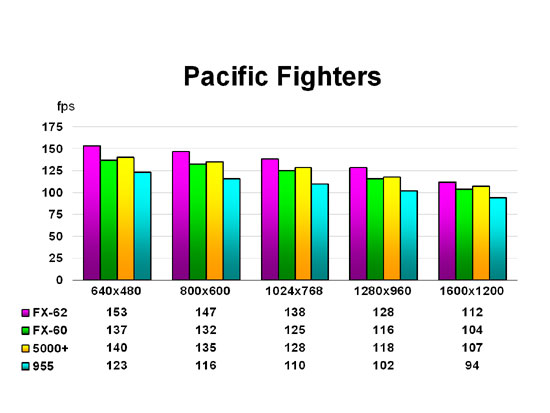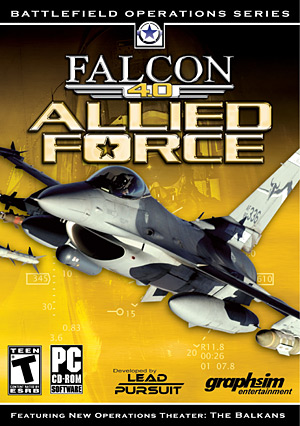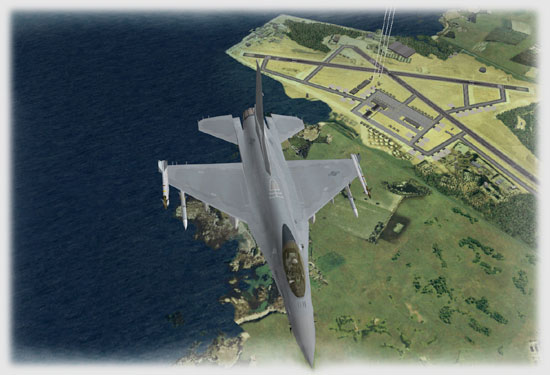Part 5 – Performance Roundup
by John Reynolds and Doug “guod” Atkinson
Introduction
Back in the halcyon years of the Pentium 2s and 3s, Gilman Louie, father of the Falcon series, made a rather offhanded comment in an interview that Falcon 4 supported Symmetric Multi-Processing, or “SMP”. Those lucky few who had Windows 2000 Pro and dual CPU systems saw the difference, albeit through SMP code that was not then fully optimized. On such systems the original Falcon 4 would split its duties between the two processors so that the heavy load of the game’s campaigns would be handled by one of the CPUs. Not optimized code — but it was in there and the SMP support was very unique for a PC title. Some thought this could be a foreboding of future gaming with dual processor systems becoming the hot setup to own, but because of a large, installed base and development costs to write the code for SMP, the dualie future some Falcon fans expected never materialized.
Move forward to the SimHQ discovery in our Dueling Dual Cores article that the new processors used the Falcon 4 SMP code remnants. At about the same time Lead Pursuit announced they would be optimizing the SMP code for Falcon 4: Allied Force, confirming this in our interview with them:
Q. Falcon 4 benefits from dual processor support, especially near the FLOT. Now that we’re on the edge of dual core processing in a single slot, any thoughts to optimizing the F4 code in this area?
A. Definitely. We’re particularly interested to continue to improve multi-threading where the most CPU intensive parts of the game run on separate “threads.
This makes maximum use of hyperthreading processors and the brand new range of dual core CPUs. Such support has already been enhanced in Allied Force. Multi-threading is important in gaming because it can boost frame rates and, hopefully, mitigate frame rate drops. This makes overall gameplay much smoother. The beauty of Allied Force — and also to Falcon 4.0 to a certain extent — is that dual-core support is there right now out of the box. Very few games developers, if any, can make that claim. Dual and, eventually, multi-core processors are the future. F4:AF is already there, but how much difference will it make? So are we on the verge of seeing a metamorphosis in an idea as old as the original Falcon 4 itself? Will the single core processors framerates overcome the benefits of SMP?
Taking a look at F4:AF on 6 different processors used in four different systems, SimHQ will try to see if we can catch a glimpse of the future.
Test Systems Setups
AMD
- ASUS A8N SLI Deluxe (nForce4 chipset) motherboard
- 1 GB (2×512 MB) Corsair DDR400 memory
- Athlon 64 FX-55 (2.6GHz single core)
- Athlon 64 X2 4800+ (2.4GHz dual core)
- ATI Radeon X800 XT PCI Express graphics card
- ASUS A8V (VIA K8T800 Pro chipset) motherboard
- 1 GB (2x512MB) Corsair DDR400 memory
- Athlon 64 3800+ (2.4GHz single core)
- PNY GeForce 6800 GT AGP graphics card
- ASUS A7N8X Deluxe (nForce2 Ultra chipset) motherboard
- 512 MB (2x256MB) Corsair DDR400 memory
- Athlon XP 2700+ (2.17GHz single core)
- ATI Radeon 9700 Pro AGP graphics card
Intel
- Intel 955XBK (955X chipset) motherboard
- 1 GB (2×512 MB) Micron DDR2 533MHz memory
- Pentium 4 840 Extreme Edition (3.2GHz dual core)
- Pentium 4 3.73 Extreme Edition (3.73GHz single core)
- ATI Radeon X800 XT PCI Express graphics card
As a joint effort between several contributors, this article’s testing was conducted with an eye toward making sure that all variables between the test systems were identified and made as similar as possible. Allied Force was patched to version 1.02 and all in-game settings were configured identically among the test systems. All benchmarks were ran at a resolution of 1024×768 since multiple graphics cards of varying performance were used in the different test systems, with anti-aliasing and anisotropic texture filtering disabled. The licensed version of Fraps 2.6.3 was used to record performance scores.
















